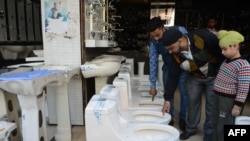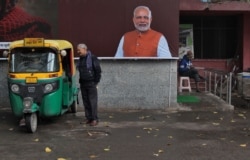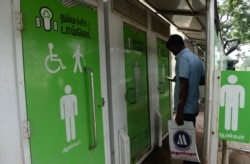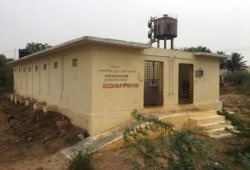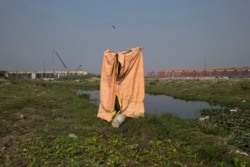A total of 110 million toilets constructed for 600 million people in 60 months.
Citing these figures, Prime Minister Narendra Modi announced October 2 that the open defecation in rural India has ended.
However, the results of the world’s biggest toilet-building program rolled out by his government five years ago are more mixed.
While huge progress has been made in providing toilets across hundreds of thousands of villages, experts say open defecation has not been eliminated in a country where venturing into the fields is accepted as normal and where not everyone has access to a toilet yet.
The experience of 37-year-old Komal Godiwal, who migrated from her village in the northern Rajasthan state to work as a housemaid in New Delhi, highlights the gains and shortfalls of Modi’s flagship $20 billion “Clean India” mission.
Two years ago, she rushed to her village when, like millions of poor people, she received a government subsidy of about $200 to build a latrine. Her sister, who lives in the same village but did not receive the subsidy, uses the toilet. Critics charge that the distribution of money to help build toilets has been uneven.
Despite being the proud owner of a toilet, Godiwal herself struggles with issues of sanitation in the urban slum that is home to thousands of poor migrants like her. She and her family share a bathroom with about eight other families. “I have to wake up before 5 am, otherwise they get very dirty and there is a huge line,” she says.
Five years ago India accounted for the most people in the world defecating in the open – 600 million. They mostly lived in rural areas, where having a household latrine was never a priority because of centuries-old cultural resistance to a toilet under the same roof as the kitchen or the prayer room.
Since then, those numbers have fallen dramatically as India has raced to build millions of toilets using an inexpensive design that involves constructing a twin-pit latrine where waste is piped from one pit to another and decomposes over time.
Critics, however, charge that overzealous government workers may have inflated numbers since a deadline had been set for declaring India open-defecation free by October 2 -- the 150th birthday of Mahatma Gandhi, the leader of India’s independence struggle.
“The entire movement happened in a mission mode. There were targets to achieve,” according to Nazar Khalid, a New Delhi research fellow at the Research Institute for Compassionate Economics, a nonprofit that works on child and sanitation issues in India. He charges that in some places people were coerced to build toilets by local authorities who wanted to demonstrate progress.
A study conducted last year by the group in four of India’s biggest states found that access to household toilets increased from 37% in 2014 to 71% last year. However, roughly one-quarter of people who owned a toilet continued to defecate in the open – they considered it wholesome and healthy and an opportunity to get some fresh air or see their fields.
The government has dismissed the study, saying that the sample size of 3,235 households was too small in a program that had targeted millions of homes.
A publicity blitz by the Clean India mission has attempted to shift dogged age-old attitudes and get people to use inside toilets.
Nearly half a million volunteers at the village level took the message to the country’s vast rural areas about how open defecation is the source of diseases such as diarrhea, typhoid and worm infection. Catchy advertisements and even a Bollywood movie featuring a top star picked up the issue to emphasize how toilets at home improve security for women who venture into the fields in the cover of darkness.
Many sanitation experts emphasize that although problems persist, there have been massive gains.
“We have to look at it in the context of the massive scale of India,” according to V.K. Madhavan who heads the India affiliate of WaterAid, a global nonprofit organization working on sanitation issues.
“My sense is that while there are still areas for improvement and gaps, the progress that has been made and what has been achieved will shift the global indicators on sanitation.”
Godiwal, who grew up going into the fields, testifies to changes she has noticed during her visits to her village in the last two years, saying most younger people have stopped open defecation.
Nevertheless, age-old habits have been harder to break among the older people, she says.
“My brother scolds my mother if she goes out in the open, but she gets up early and goes out quietly because she prefers it,” she laughs. Meanwhile, she frets about the state of the toilet she is forced to use in her slum.
The challenge of reaching the “last mile” also remains – coverage for the poorest and most marginalized, who often tend to be excluded from such programs.
“The point is that in our country so many people are so poor, life is a struggle and sanitation is not a priority,” says Madhavan.
At the same time, he is bullish about the program, saying there will be a point at which “it becomes aspirational for everybody to have a toilet.”




